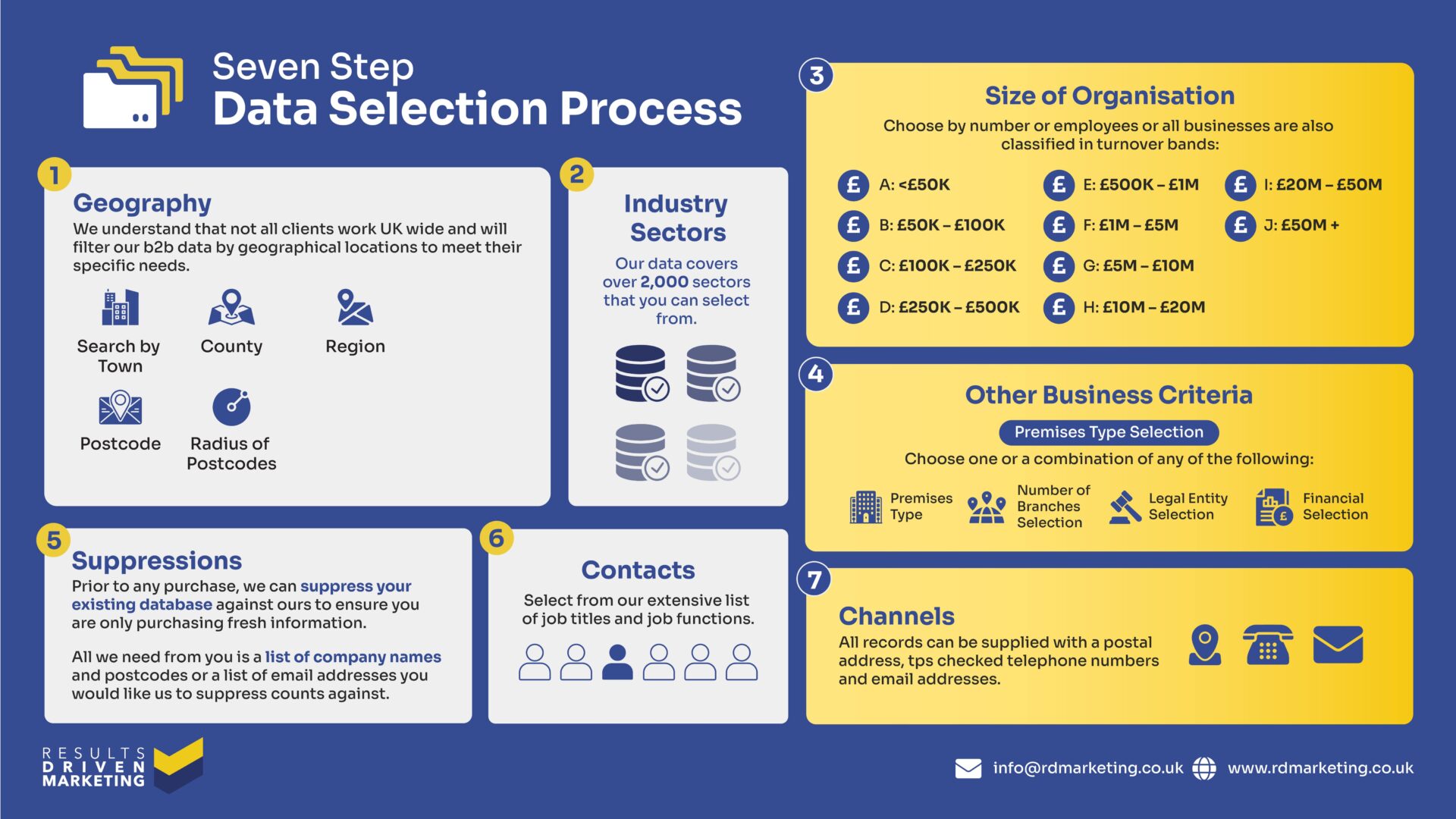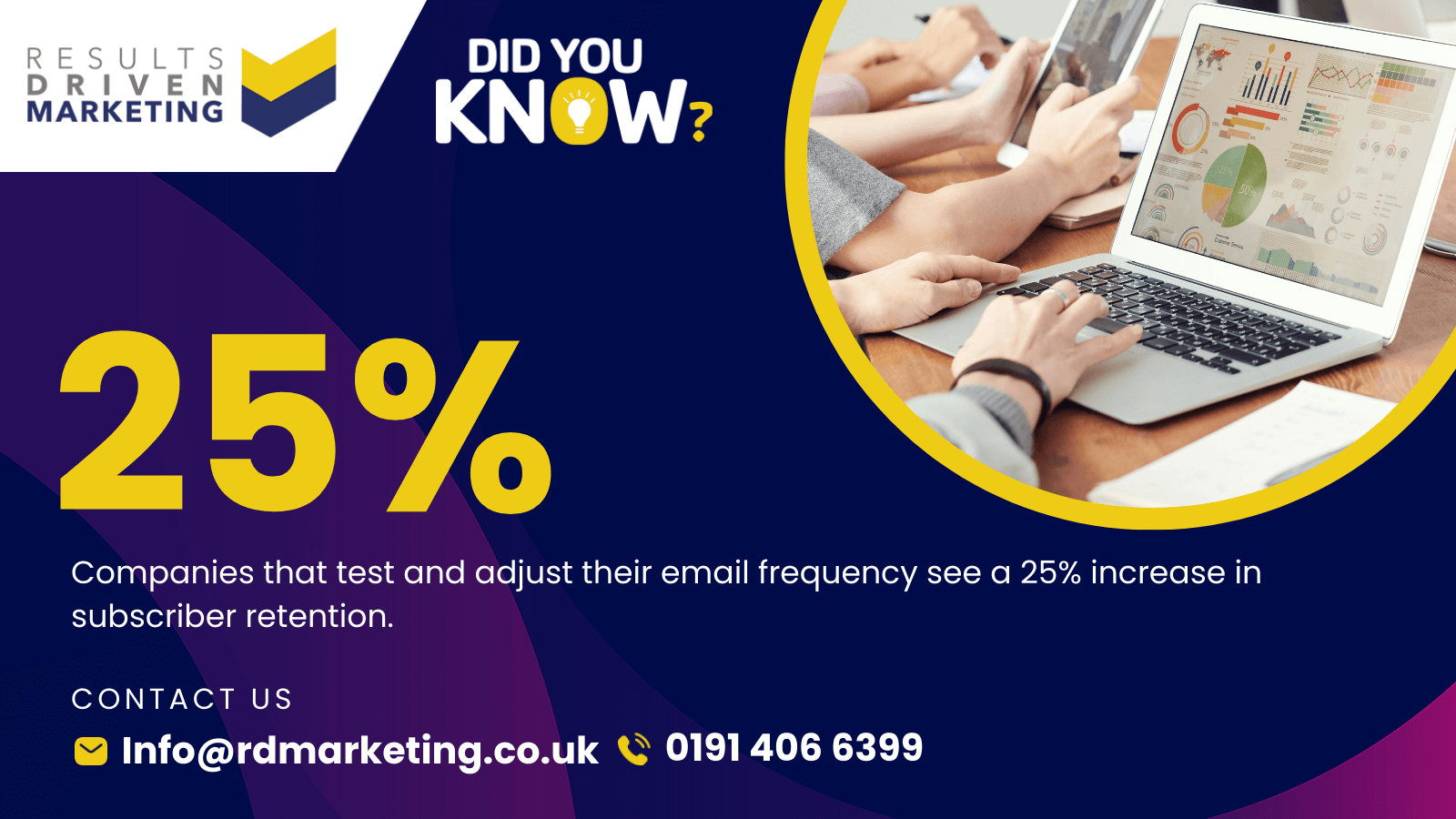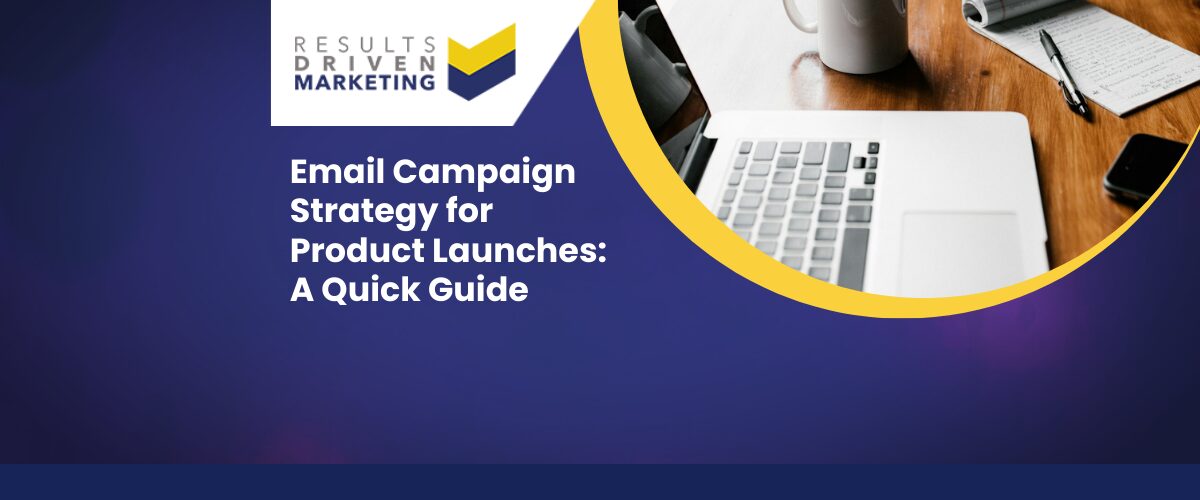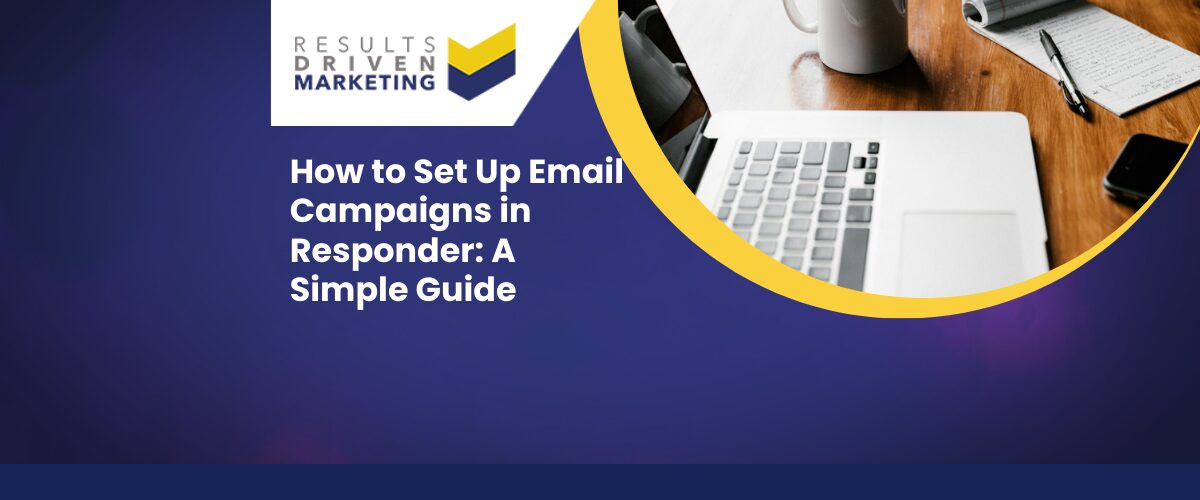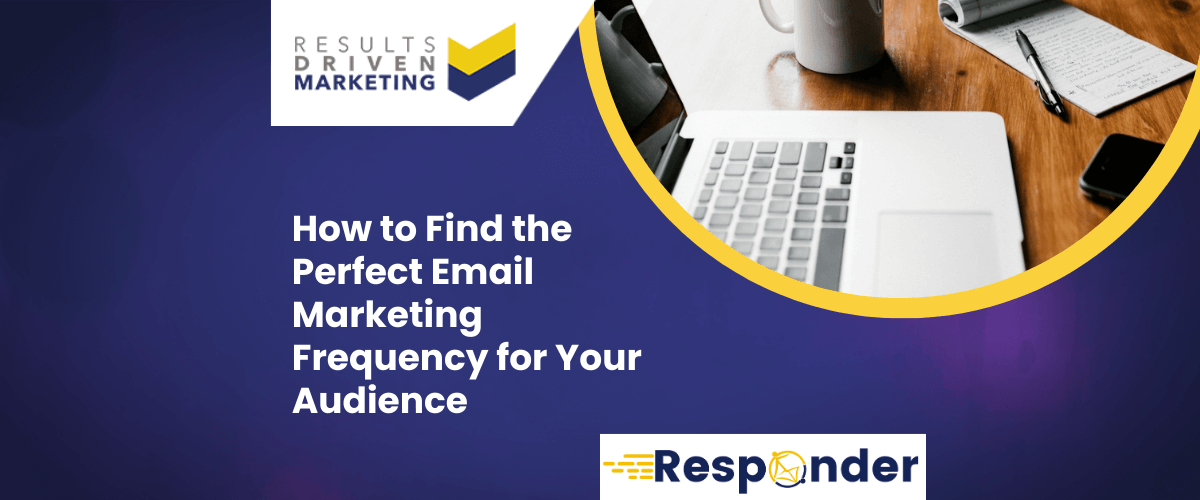
How to Find the Perfect Email Marketing Frequency for Your Audience
Getting the right email marketing frequency isn’t just a small detail—it’s a game-changer for the success of your campaigns.
When you hit that sweet spot, you keep your audience engaged without overwhelming them. But let’s face it, finding that balance can be tricky.
Send too many emails, and you risk creating “email fatigue,” which can lead to unsubscribes and spam complaints. Send too few, and you may lose momentum, brand recall, or the opportunity to build stronger relationships with your readers.
Why is email marketing frequency so essential? Quite simply, the right frequency can significantly improve your email marketing metrics, boosting open rates, click-through rates, and, ultimately, conversion rates.
With every email sent, you’re creating a touchpoint that keeps your brand top-of-mind. However, it’s not just about sending emails; it’s about creating a schedule that feels natural to your audience and fosters trust.
In this article, we’ll guide you through how to determine the optimal email marketing frequency for your unique audience.
At RD Marketing, we understand the importance of high-quality data and effective email management.
That’s why we offer tailored Email Address List Data and other essential services like Data Cleansing and Data Enrichment to support a more efficient, personalised email strategy.
Let’s dive in and discover the keys to finding that perfect email marketing frequency for your audience.
Table of contents:
Why Email Marketing Frequency Matters
When it comes to email marketing, frequency isn’t just about sending messages—it directly affects your audience’s experience and engagement with your brand.
Striking the right email marketing frequency can mean the difference between nurturing a loyal customer base and driving them away with email fatigue.
For instance, studies show that around 45% of subscribers are likely to unsubscribe if they feel overwhelmed by too many emails.
In contrast, a too-low frequency can make your brand forgettable, impacting metrics like open rates, click-through rates, and ultimately, conversions.
Key Metrics Impacted by Email Frequency
- Open Rate: When emails are sent at the right frequency, recipients are more likely to open them because the messaging remains fresh and welcome. Too many emails, though, can make your audience feel bombarded, causing open rates to drop over time.
- Click-Through Rate (CTR): This is one of the clearest indicators of engagement. A balanced email frequency gives subscribers a reason to click on your content, enhancing CTR and driving traffic to your website or landing pages.
- Unsubscribe Rate: High unsubscribe rates are often linked to an overwhelming frequency. People are quick to unsubscribe if they feel over-emailed, especially if the content doesn’t add value. To maintain low unsubscribe rates, understanding your ideal email cadence is crucial.
By calibrating your email marketing frequency, you can boost both customer satisfaction and ROI, ensuring that every email lands with the right impact.
Analysing metrics alongside professional tools, like Telemarketing Data or Consumer Data from RD Marketing, can offer a more detailed view of audience preferences and refine your approach further.
While sending too many emails can lead to fatigue, sending too few may cause your brand to fade from memory.
Achieving the perfect balance often involves a bit of testing and an understanding of your unique audience.
For companies working with global or segmented audiences, International Email Lists can be invaluable for tailoring frequency to different regions.
Remember, your frequency should be a natural fit for your brand and industry, aiming to meet your audience’s needs without overloading their inbox.
Factors Influencing Email Frequency
Choosing the right email marketing frequency isn’t a one-size-fits-all decision. Several factors influence how often your subscribers want to hear from you, including demographic details, the nature of your business, seasonality, and even the type of content you’re sending.
Let’s dive into these key factors to better understand how each one can shape your email frequency strategy.
Audience Demographics
Your audience’s age, location, and industry can play a big role in determining their ideal email frequency. For example:
- Age: Younger audiences might be more receptive to frequent updates, especially if you’re offering deals or fresh, trendy content. Older subscribers, however, might prefer fewer, more substantial emails.
- Location: Geographic factors can impact frequency as well. Regional cultural norms and time zones can influence how often people expect to hear from you. For companies targeting global audiences, considering an International Email List can help ensure that messages are tailored for each region.
- Industry: Different sectors have varying expectations for email frequency. In B2B sectors, a weekly or bi-weekly cadence might suffice, whereas B2C industries, especially in retail, might see better results with daily or multiple weekly emails.
Understanding these nuances can help you adapt your email strategy to match your audience’s unique preferences.
Type of Business
The type of business you run also heavily influences email frequency. Here’s how different sectors may vary:
- E-commerce: Daily or semi-weekly emails, especially if they’re focused on promotions or product updates, can work well for e-commerce brands.
- B2B Companies: A more conservative approach, like weekly or bi-weekly, often fits best in B2B since these audiences value informative content over frequent promotional messages. Using targeted B2B Data can help you better align your emails with client expectations.
- Service-Based Businesses: Service industries may do well with monthly newsletters and occasional updates, as too frequent emails might disrupt the customer experience.
Each type of business has its own rhythm, so aligning frequency with industry standards can significantly enhance engagement.
Seasonality and Events
Email frequency can also fluctuate based on the time of year or specific events. For example:
- Holiday Seasons: Retail brands often increase their frequency in November and December for holiday promotions, while B2B companies may find greater engagement during the start of the fiscal year.
- Special Events: If you’re running a major sale, product launch, or company event, temporarily increasing email frequency can boost awareness. Consider using services like Direct Mail Data alongside email campaigns for these high-impact moments.
Seasonal adjustments help you stay relevant and engaging without overwhelming your subscribers during quieter times.
Content Type
Finally, different types of content require different cadences. Here’s a breakdown:
- Newsletters: Weekly or bi-weekly newsletters are standard for companies looking to keep their audience updated without flooding their inboxes.
- Promotional Emails: For promotions, sending more frequent emails over a shorter period, like every few days, is common, especially around big sales events.
- Transactional Emails: These are often triggered by customer actions (like a purchase confirmation), so frequency is not a concern. However, transactional emails can be an opportunity to offer related promotions without impacting regular cadence.
Finding the right balance is key to success. Companies that combine effective segmentation with tools like a CTPS Checker can ensure they’re sending the right content to the right people at the right time.
Common Email Marketing Frequency Options and Their Pros/Cons
Choosing the right email marketing frequency is crucial, as it determines how your audience interacts with your content and impacts key metrics like engagement, conversion, and unsubscribe rates.
Here’s a look at the pros and cons of different frequency options to help you find what works best for your business.
Daily Emails
Ideal for: E-commerce brands, daily deals, and news updates
Pros:
- Consistent Engagement: Sending daily emails can keep your brand consistently in front of subscribers, which is helpful for businesses offering daily deals, time-sensitive content, or news updates.
- Higher Conversion Opportunities: More frequent emails mean more chances to convert readers, especially if each message offers unique, valuable content.
Cons:
- Risk of Burnout: Receiving emails every day can quickly lead to email fatigue, increasing the likelihood of unsubscribes.
- High Unsubscribe Rate: Daily emails may push your subscribers to opt out if they feel overwhelmed.
For companies with broad product ranges and diverse content, daily emails can keep the audience engaged. However, to make sure you’re reaching the right people at the right time, using tools like a CTPS Checker to verify your list is essential.
Weekly Emails
Ideal for: Newsletters, blog updates, service-based companies
Pros:
- Balanced Engagement and Recall: Weekly emails are frequent enough to maintain brand recall but less overwhelming than daily messages. This frequency can keep subscribers engaged without overloading their inboxes.
- Flexible Content: Weekly emails allow you to include a mix of content, like news, blog posts, and special offers.
Cons:
- Limited Reach During High Demand Periods: A weekly cadence may not meet the needs of high-traffic seasons, such as holidays, where increased frequency is beneficial.
Weekly emails work well for businesses that aim to nurture a relationship with their audience over time.
For instance, an email campaign with B2B Data could use weekly updates to offer industry insights, subtly reinforcing brand authority without overwhelming subscribers.
Bi-Weekly and Monthly Emails
Ideal for: B2B companies, informational content, subscription-based services
Pros:
- High-Value Content: A less frequent cadence can signal that each email is packed with value. Bi-weekly and monthly emails work well for detailed newsletters, industry updates, or in-depth articles.
- Low Unsubscribe Rate: Fewer emails mean a reduced risk of email fatigue, which can lead to higher retention rates over time.
Cons:
- Lower Engagement: With bi-weekly or monthly emails, subscribers might engage less frequently, which can affect brand recall.
- Risk of Losing Momentum: For brands looking to build steady engagement, fewer emails may make it harder to establish a strong connection.
For businesses focusing on in-depth content, bi-weekly or monthly emails can be effective. If you manage a large email list, utilising Email Marketing Management Services to segment your audience can help you tailor your message and ensure each email resonates, even if you’re sending less frequently.
Which Frequency Is Best?
The ideal email marketing frequency will depend on the nature of your content, audience preferences, and industry. To find what works best, testing various frequencies can help. For instance:
- Daily for e-commerce or high-frequency news updates.
- Weekly for service-based businesses that rely on updates and promotions.
- Bi-weekly or Monthly for B2B industries and content-heavy newsletters.
Every business is unique, so what works for one might not work for another. Leveraging high-quality data, like an International Email List or Direct Mail Data, helps refine your email marketing frequency by matching it with your specific audience needs.
Steps to Determine Your Ideal Email Frequency
Finding the perfect email marketing frequency isn’t just guesswork; it involves careful analysis and testing to create an email cadence that resonates with your audience.
Here’s a step-by-step guide to help you discover the ideal email frequency for your brand and audience.
Understand Audience Preferences
The first step in determining the right email frequency is understanding what your audience actually wants. Surveys, A/B testing, and analytics are powerful tools that help gather insights on preferred email cadence.
- Surveys: A quick survey asking subscribers about their preferred frequency can provide direct feedback. Ask if they prefer weekly, bi-weekly, or monthly updates. This can be especially useful if you’re working with segmented lists, like a Consumer Data list.
- A/B Testing: Test different frequencies within smaller groups to gauge responses. For example, send weekly emails to one group and bi-weekly emails to another, then monitor engagement.
- Analytics: Leveraging your email marketing software to track metrics like open and click-through rates by frequency can highlight preferences. This can also identify any correlation between frequency and subscriber engagement.
Understanding audience preferences gives you a solid foundation, so your emails arrive at a cadence that feels right and avoids overloading subscribers.
Analyse Past Campaign Data
Your past email campaigns hold valuable insights that can help shape future frequency decisions.
A data-driven approach ensures that you’re aligning your frequency with patterns already present in your audience’s behavior. Here’s what to look at:
- Open Rates: Are open rates consistently high for certain campaigns or frequencies? If you notice that weekly emails outperform bi-weekly or monthly, that’s a good indication of what your audience prefers.
- Click-Through Rates (CTR): CTR gives you a clearer picture of how engaged your subscribers are with the content. A high CTR on less frequent emails might indicate that people value quality over quantity.
- Unsubscribe Rates: If unsubscribe rates spike when you increase frequency, it’s a signal that you might be sending too many emails. However, if unsubscribes are low and engagement is high, then your current frequency may be working well.
Utilising tools like Email Marketing Management Services can simplify this process, allowing you to analyse your data more efficiently and adjust based on past performance.
Segment Your Audience
Not all subscribers have the same needs or preferences, so segmentation is key.
By dividing your email list into groups based on engagement levels, purchase history, demographics, or other factors, you can tailor email frequency more effectively.
- Engagement-Based Segmentation: Send more frequent updates to highly engaged subscribers and space out emails for those less engaged. This approach not only helps maintain high engagement rates but also prevents email fatigue in less active segments.
- Demographics: Different demographic groups may respond differently to email frequency. For example, younger audiences might engage more frequently, while older groups prefer occasional updates. Using B2B Data or International Email Lists can refine these audience groups even further.
- Behavioral Segmentation: Tailoring email frequency based on purchase history or behaviour can lead to better results. Customers who recently made a purchase might be more open to follow-up emails than those who haven’t engaged with your brand in a while.
By segmenting your list, you create a frequency that feels personalised, ensuring that each group receives an email cadence aligned with their engagement level and preferences.
Test and Adjust
Testing different email marketing frequencies can help you narrow down the ideal cadence for your brand.
Use split tests over an extended period to see how subscribers respond to various frequencies. This iterative approach allows you to refine over time, building a frequency model that keeps engagement high.
- Set Testing Periods: For each frequency test, allow a few weeks or even months to gather sufficient data.
- Compare Metrics: Look for shifts in open rates, click-through rates, and unsubscribe rates to measure each frequency’s success.
- Iterate: Use the findings from each test to tweak your approach. For instance, if weekly emails consistently outperform bi-weekly in engagement, then increase frequency for specific segments.
With each test, you’ll gain a clearer picture of what resonates most with your audience. Tools like our Data Cleansing Services can help keep your data accurate, ensuring reliable test results.
Incorporate Subscriber Feedback
Direct feedback from subscribers offers invaluable insights into the ideal email marketing frequency.
Setting up a feedback loop allows your subscribers to let you know if you’re hitting or missing the mark with your current cadence.
- Add Feedback Links: Consider including a feedback link in your emails where subscribers can indicate if they’re happy with the frequency or if they’d prefer adjustments.
- Customer Service Interactions: Use feedback from customer service interactions to gauge if frequency is a common complaint or preference.
- Re-Evaluation: Regularly revisit feedback to see if preferences shift over time, especially as your business or content offering evolves.
Incorporating subscriber feedback allows you to adjust and optimise your approach based on real-time insights, creating a frequency that keeps your audience satisfied.
For a comprehensive approach, our Data Enrichment Services can help you deepen your understanding of your audience, allowing for an even more customised strategy.
Tools and Techniques for Managing Email Frequency
Managing the perfect email marketing frequency takes more than just intuition—it requires reliable tools and data-backed techniques to automate and fine-tune your email schedule effectively.
From automation platforms to audience engagement metrics, let’s explore some essential resources that can help you master email cadence.
Automation and Tracking Platforms
There are several marketing automation platforms designed to help streamline email frequency and enhance your campaigns:
- HubSpot: With HubSpot, you can easily set automated workflows based on user behavior, which is ideal for managing tailored email frequencies. Its analytics suite also offers insights into open and click rates, helping you monitor engagement by frequency.
- Mailchimp: Mailchimp’s automation features allow you to schedule campaigns with flexible frequency options, perfect for brands needing targeted segmentation. You can A/B test frequencies and review results with in-depth metrics, helping you refine your cadence.
- RD Marketing’s Email Marketing Management Services: Our email marketing platform provides advanced tracking and segmentation features, allowing businesses to tailor emails based on audience preferences and maximise engagement.
Automation tools can take much of the guesswork out of frequency management, letting you create a schedule that responds dynamically to user interactions.
Using Audience Engagement Metrics to Refine Email Frequency
When it comes to perfecting email marketing frequency, your audience engagement metrics are a goldmine of information. Here are a few tips to help you use these metrics effectively:
Open and Click-Through Rates: Regularly monitor your open and click-through rates to see how they respond to different frequencies. High engagement usually indicates a good balance, while dips might suggest you’re sending either too many or too few emails.
Bounce and Unsubscribe Rates: Keep an eye on these metrics as well. High unsubscribe or bounce rates could be a sign of email fatigue, indicating that you might need to reduce frequency.
Segment-Based Metrics: If your list includes varied audience types, segmentation can help you refine frequency for each group. For instance, a group created from Consumer Data may respond better to a different cadence than B2B subscribers.
Using Enhanced Data Tools: Access to high-quality, segmented data like Email Address List Data or Telemarketing Data enables you to tailor frequency by demographics and behavior, leading to more effective and engaging campaigns.
With the right tools and data-driven insights, you can keep your email marketing frequency aligned with audience preferences, ultimately improving engagement and retention.
For more advanced support, RD Marketing offers Data Enrichment Services and Data Cleansing Services to ensure that your lists are accurate and up-to-date, enabling even more precise frequency adjustments.
Conclusion
Finding the ideal email marketing frequency is essential for building a lasting connection with your audience.
The right balance ensures your emails are welcomed rather than ignored, helping you foster engagement, increase open rates, and boost conversions.
By using a data-driven approach—analysing metrics, segmenting audiences, and incorporating subscriber feedback—you can continuously adjust your email cadence to keep it aligned with audience expectations.
Experimentation is key here. Don’t be afraid to test different frequencies and let the data guide you.
Tools like RD Marketing’s Email Marketing Management Services can streamline the process, while access to high-quality lists, like our B2B Data or International Email List, ensures your emails reach the right people at the right time.
For any business committed to enhancing its email strategy, adjusting email frequency is a powerful way to strengthen customer relationships.
And remember, RD Marketing is here to support you with services like Direct Mail Data and Data Enrichment Services. Start fine-tuning your email frequency today, and watch your engagement soar!
Who are we?
Thinking about “how do I buy data“?
Providing b2b database solutions is our passion.
Offering a consultancy service prior to purchase, our advisors always aim to supply a database that meets your specific marketing needs, exactly.
We also supply email marketing solutions with our email marketing platform and email automation software.
Results Driven Marketing have the best data of email lists for your networking solutions as well as direct mailing lists & telemarketing data in telemarketing lists
We provide data cleansing and data enrichment services to make sure you get the best data quality.
We provide email marketing lists and an international email list for your business needs.
At RDM We provide b2c data as we have connections with the best b2c data brokers.
A good quality b2b database is the heartbeat of any direct marketing campaign…
It makes sense to ensure you have access to the best!
Call us today on 0191 406 6399 to discuss your specific needs.
Results Driven Marketing
0191 406 6399


